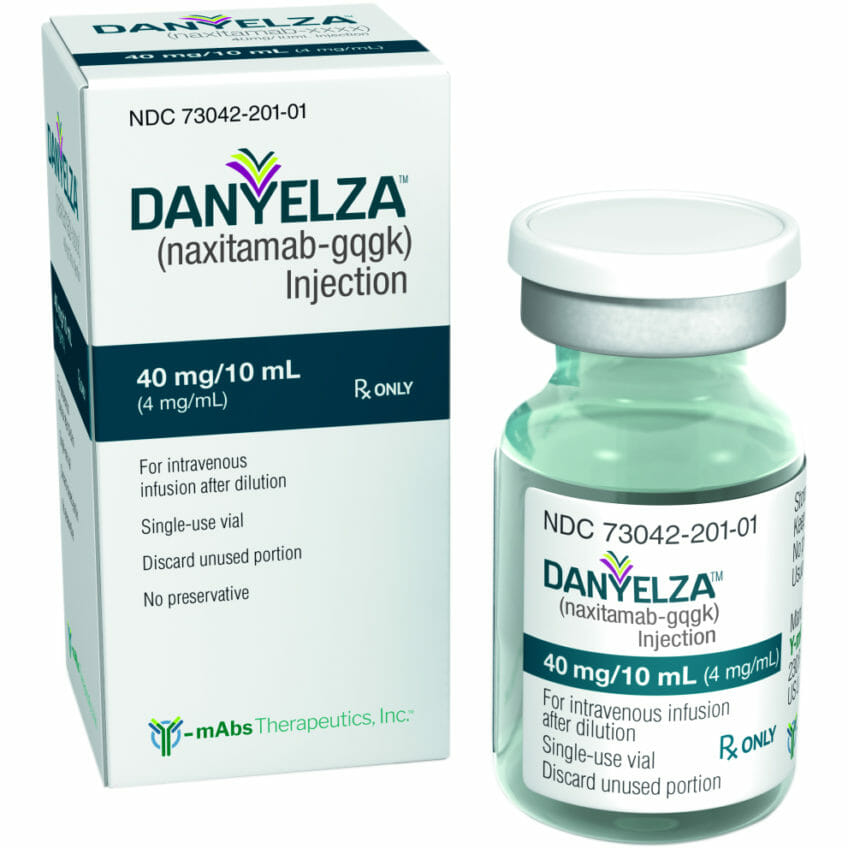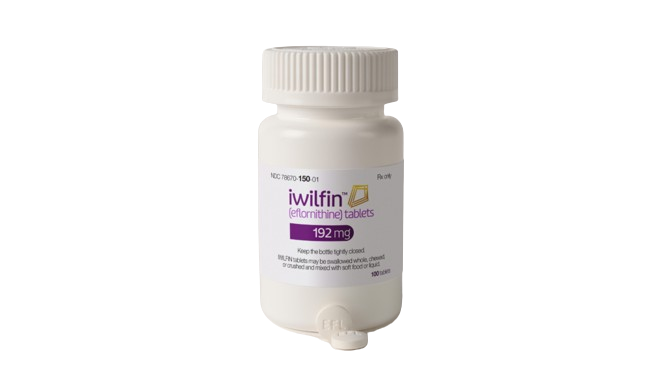New Neuroblastoma treatments 2024
New Neuroblastoma Treatments 2024
Neuroblastoma is a type of cancer that most commonly affects children, especially those under the age of five. It originates in the immature nerve cells of the sympathetic nervous system, which is responsible for the body's fight or flight response. The disease can develop in the adrenal glands, neck, chest, or spinal cord, and its symptoms vary depending on the tumor's location, but may include abdominal pain, lumps under the skin, or difficulty breathing. Diagnosis typically involves a combination of imaging tests, biopsies, and laboratory tests to determine the presence and extent of the tumor. The prognosis and treatment options for neuroblastoma can vary widely, depending on factors such as the age of the patient, stage of the disease, and tumor biology.
When considering treatment options for neuroblastoma, it is important to consult with a multidisciplinary team of specialists, including pediatric oncologists, surgeons, and radiation therapists. Treatment plans are individualized and may include surgery to remove the tumor, chemotherapy, radiation therapy, stem cell transplant, or a combination of these. In some cases, newer targeted therapies or immunotherapies may be recommended, which can be more effective and have fewer side effects than traditional treatments. Clinical trials are also an option for some patients, offering access to cutting-edge treatments. The choice of medicine and treatment plan should be based on a thorough discussion with healthcare providers, taking into account the specific characteristics of the tumor and the overall health of the patient.

Treatment options
| Treatment option | Estimated cost | Efficacy | Eligibility |
|---|---|---|---|
| Chemotherapy | $3,000 - $10,000 | Varies depending on regimen | Most patients, depends on stage and risk group |
| Surgery | $10,000 - $50,000 | High for localized tumors | Patients with resectable tumors |
| Radiation Therapy | $25,000 - $50,000 | Good for localized control | High-risk patients or when surgery is not possible |
| Stem Cell Transplant | $100,000 - $300,000 | Can be effective in high-risk patients | High-risk patients after induction therapy |
| Immunotherapy with Dinutuximab | $7,000 - $15,000 | Improved survival in high-risk patients | High-risk patients, after consolidation therapy |
| Danyelza (naxitamab) | $30,000 - $40,000 | Effective for relapsed or refractory high-risk neuroblastoma | Patients with relapsed or refractory high-risk neuroblastoma |
| Iwilfin (larotrectinib) | $10,000 - $20,000 | Effective for tumors with NTRK gene fusion | Patients with NTRK gene fusion-positive tumors |
| Retinoid Therapy (Isotretinoin) | $1,000 - $3,000 | Useful in preventing relapse | After completion of consolidation therapy |
| MIBG Therapy | $10,000 - $30,000 | Good for targeting metastatic disease | Patients with MIBG-avid lesions |
| Experimental Treatments | Variable | Not established | Patients enrolled in clinical trials |
Treatments options in detail
Chemotherapy
Chemotherapy is one of the most common treatments for neuroblastoma, particularly for high-risk cases. It involves using anti-cancer drugs to kill cancer cells or stop them from growing and dividing. A combination of drugs is often used, and the specific regimen depends on the patient's age, stage of cancer, and other factors. Common drugs used in chemotherapy for neuroblastoma include cyclophosphamide, doxorubicin, and vincristine.
Surgery
Surgery is another primary treatment for neuroblastoma, especially when the tumor is localized and can be completely removed. The goal of surgery is to take out as much of the tumor as possible without causing harm to the surrounding organs. In some cases, surgery might be followed by chemotherapy or radiation therapy to target any remaining cancer cells.
Radiation Therapy
Radiation therapy uses high-energy rays or particles to destroy cancer cells. This treatment is often used for neuroblastoma that has spread to other parts of the body or cannot be fully removed by surgery. It may also be used to relieve symptoms caused by the tumor. Radiation therapy can be external, where the rays are directed at the tumor from outside the body, or internal, where a radioactive substance is placed near the cancer cells.
Stem Cell Transplant
High-dose chemotherapy with stem cell transplant is a treatment typically reserved for high-risk neuroblastoma cases. This approach involves using very high doses of chemotherapy to kill the cancer cells, followed by replenishing the patient's bone marrow with healthy stem cells. These stem cells can be autologous, coming from the patient's own body, or allogeneic, donated from another person.
Immunotherapy
Immunotherapy is a treatment that helps the patient's immune system fight cancer. One form of immunotherapy used in neuroblastoma treatment is monoclonal antibody therapy. These are laboratory-made molecules that can bind to specific targets on cancer cells. Dinutuximab is a monoclonal antibody that targets a substance on neuroblastoma cells called GD2, helping the immune system destroy the cancer cells.
Retinoid Therapy
Retinoid therapy involves using drugs that are related to vitamin A to prevent cancer cells from growing. Isotretinoin (Accutane) is a retinoid drug used in the treatment of neuroblastoma, often after chemotherapy and stem cell transplant, to help reduce the risk of the cancer returning.
Targeted Therapy
Targeted therapy uses drugs that attack specific vulnerabilities in cancer cells. For neuroblastoma, these therapies may target specific genes or proteins that are involved in the growth and survival of cancer cells. ALK inhibitors are an example of targeted therapy used in the treatment of neuroblastoma with ALK mutations.
Danyelza (Naxitamab)
Danyelza (naxitamab) is a monoclonal antibody that targets the GD2 antigen on neuroblastoma cells, similar to dinutuximab. It is approved by the FDA for use in combination with granulocyte-macrophage colony-stimulating factor (GM-CSF) for the treatment of high-risk neuroblastoma in the bone or bone marrow that has not fully responded to previous treatments, or that has relapsed.
Iwilfin (Irinotecan Liposome Injection)
Iwilfin, also known as irinotecan liposome injection, is a form of the chemotherapy drug irinotecan that is encapsulated in a liposomal delivery system, which may help to prolong the drug's action. While not specifically approved by the FDA for the treatment of neuroblastoma, it may be used off-label or in clinical trials to treat this type of cancer, especially in cases where other treatments have failed.
Experimental Treatments
Experimental treatments for neuroblastoma are being studied in clinical trials. These may include new chemotherapy drugs, novel targeted therapies, and innovative approaches to immunotherapy. Patients with neuroblastoma may consider enrolling in a clinical trial to access these experimental treatments. It is important to discuss the potential risks and benefits with a healthcare professional before participating in a clinical trial.
Treatments Not Approved by the FDA
Some treatments for neuroblastoma have not been approved by the FDA and are considered experimental or are used off-label. This includes certain drugs, drug combinations, or treatment regimens that have shown promise in clinical studies but have not yet received regulatory approval. Patients should consult with their medical team to understand the potential risks and benefits of these treatments.
Supportive Care
In addition to these treatments, supportive care is crucial for managing symptoms and side effects in patients with neuroblastoma. This includes pain management, nutritional support, and psychological support to improve quality of life during and after treatment. Supportive care also involves monitoring and treating any long-term effects of the disease or its treatment.
Conclusion
Treatment for neuroblastoma varies widely based on the specifics of the case, including the age of the patient, stage of the disease, and other factors. A multidisciplinary team approach is essential to tailor the treatment plan to the individual needs of the patient. Ongoing research continues to improve the outcomes for patients with neuroblastoma, and new treatments are being developed and tested in clinical trials.
Symptoms
Symptoms of Neuroblastoma
Neuroblastoma is a type of cancer that most commonly affects children and is characterized by the development of a solid tumor formed by neuroblasts (immature nerve cells). The symptoms of neuroblastoma can vary significantly depending on the size and location of the tumor, as well as whether the cancer has spread (metastasized). The following are the most common symptoms associated with neuroblastoma:
Abdominal Symptoms
A primary tumor located in the abdomen, which is the most common site for neuroblastoma, may cause a variety of abdominal symptoms. These can include abdominal pain, a noticeable mass or swelling in the abdomen, and constipation. The mass may be felt during a physical examination or seen as a distention of the abdomen. In some cases, the tumor may press on other organs or blood vessels, which can lead to additional symptoms such as changes in bowel habits or difficulty urinating.
Respiratory Symptoms
When a neuroblastoma tumor develops in the chest, it may lead to respiratory symptoms. These can include difficulty breathing, wheezing, or a persistent cough. In some instances, the tumor may press on the superior vena cava (the large vein that carries blood from the head, neck, and upper chest to the heart), leading to swelling in the face, neck, arms, and upper chest, sometimes accompanied by a bluish discoloration of the skin.
Bone Pain and Limping
If the cancer has metastasized to the bones, it can cause bone pain or limping. Children with neuroblastoma may complain of aches or pains in the bones, and they may be unwilling to walk or may show signs of a limp. This bone involvement can also lead to unexplained fractures.
Generalized Symptoms
Generalized symptoms are often seen in children with neuroblastoma, regardless of the tumor's location. These can include fever, fatigue, loss of appetite, and weight loss. These symptoms are nonspecific and can be associated with a wide range of childhood illnesses, which sometimes makes the early detection of neuroblastoma challenging.
Swelling and Bruising
If the tumor is pressing on blood vessels, it can lead to swelling in the legs or scrotum in boys. Additionally, neuroblastoma can cause bruising, particularly around the eyes, which may look like "raccoon eyes" due to the collection of blood under the skin.
Hypertension
Some neuroblastoma tumors can secrete hormones that affect blood pressure, leading to hypertension (high blood pressure). This can be detected during a physical examination and may require further investigation if no other cause is apparent.
Skin Nodules and Blueberry Muffin Rash
In cases where cancer has spread to the skin, small blue or purple nodules may be visible. This is sometimes referred to as a "blueberry muffin" rash due to its appearance. These nodules are clusters of neuroblastoma cells that have metastasized to the skin.
Neurological Symptoms
Neurological symptoms can occur if the tumor presses on spinal nerves or if cancer has spread to the brain. These symptoms can include numbness, weakness, or paralysis, particularly in the lower parts of the body. In some cases, children may experience changes in their level of consciousness or develop seizures.
Opsoclonus-Myoclonus Syndrome
A rare but distinctive set of symptoms known as opsoclonus-myoclonus syndrome can be associated with neuroblastoma. This syndrome is characterized by rapid, multi-directional eye movements (opsoclonus), muscle jerks (myoclonus), ataxia (difficulty coordinating movements), irritability, and sleep disturbances. This syndrome is thought to be the result of an autoimmune reaction triggered by the tumor.
Hormonal Symptoms
Some neuroblastomas produce hormones that can lead to symptoms such as diarrhea, high blood pressure, rapid heartbeat, and flushing of the skin. These symptoms are a result of the release of catecholamines or other vasoactive peptides by the tumor cells.
Anemia and Thrombocytopenia
If cancer has spread to the bone marrow, it can interfere with the production of blood cells, leading to anemia (low red blood cell count) and thrombocytopenia (low platelet count). Anemia can cause symptoms such as pallor, fatigue, and shortness of breath, while thrombocytopenia can lead to easy bruising and bleeding.
It is important to note that many of the symptoms of neuroblastoma can be similar to those of other, more common childhood conditions. As a result, neuroblastoma can sometimes be difficult to diagnose early. If a child exhibits persistent or unexplained symptoms, it is crucial for them to be evaluated by a healthcare professional to determine the underlying cause and to initiate appropriate treatment if necessary.
Cure
Current Treatment Approaches for Neuroblastoma
Neuroblastoma, a cancer that develops from immature nerve cells, primarily affects children. While the term "cure" implies the complete eradication of the disease without the chance of recurrence, in the context of neuroblastoma, it is more appropriate to discuss treatment and long-term outcomes. The potential for a cure in neuroblastoma depends on various factors, including the age of the patient, the stage of the disease, and the tumor's biology.
Standard Treatment Modalities
The standard treatment for neuroblastoma often involves a combination of therapies. Surgery is used to remove the tumor if it is localized and deemed resectable. Chemotherapy is employed to shrink tumors and eradicate cancer cells, which can be particularly effective in younger patients with low or intermediate-risk neuroblastoma. Radiation therapy may be used to target residual disease or in cases where the tumor is in a location that makes surgical removal challenging.
High-Risk Neuroblastoma Treatment
High-risk neuroblastoma, which is more challenging to treat, may require a more aggressive treatment approach. This includes intensive chemotherapy, surgery, radiation therapy, stem cell transplant (also known as bone marrow transplant), and immunotherapy. Maintenance therapy with a drug called isotretinoin may also be used to help prevent the cancer from returning after treatment.
Stem Cell Transplant
For high-risk patients, a stem cell transplant can be a crucial part of treatment. This procedure involves high doses of chemotherapy to destroy as many cancer cells as possible, followed by an infusion of stem cells to rebuild the bone marrow. This approach has improved outcomes for many children with high-risk neuroblastoma, but it is not without significant risks and potential long-term side effects.
Immunotherapy
Immunotherapy has emerged as a promising treatment for neuroblastoma. One form of immunotherapy uses an antibody called dinutuximab that targets a substance found on the surface of neuroblastoma cells. This antibody can help the immune system recognize and destroy cancer cells. Immunotherapy is often used in combination with other treatments and has been shown to improve survival rates in high-risk neuroblastoma patients.
Retinoid Therapy
Retinoid therapy with isotretinoin is used after intensive treatment to help prevent the cancer from returning. Isotretinoin, a derivative of vitamin A, can cause cancer cells to mature into normal cells or to die. It is typically used as part of maintenance therapy in high-risk patients.
Targeted Therapy
Targeted therapy drugs work by targeting specific genetic features of cancer cells. For example, drugs that inhibit the ALK (anaplastic lymphoma kinase) gene, which can be altered in neuroblastoma, are being used in some cases. These treatments may be more effective and have fewer side effects than traditional chemotherapy, but they are generally used for patients who have not responded to other treatments or whose cancer has returned.
Relapsed or Refractory Neuroblastoma
For patients whose neuroblastoma returns (relapsed) or does not respond to treatment (refractory), the cure becomes more challenging. In these cases, new combinations of treatments or experimental therapies may be tried. Clinical trials play a significant role in these situations, offering access to new and potentially more effective therapies.
Long-Term Outcomes and Follow-Up
Long-term outcomes for children with neuroblastoma have improved significantly over the past few decades, particularly for those with low and intermediate-risk disease. However, high-risk neuroblastoma still poses a significant challenge, and long-term survival rates are lower. Continuous follow-up is essential for all neuroblastoma survivors due to the potential for late effects of treatment and the possibility of disease recurrence.
Conclusion on Cure
While there is no guaranteed cure for neuroblastoma, the advancement in treatments has led to improved survival rates, especially for certain subgroups of patients. The term "cure" is used cautiously, as even after successful treatment, there is always a risk of recurrence. The goal of current treatment strategies is to achieve a state of no evidence of disease (NED) and to maintain it long-term. Continuous research and clinical trials are essential to improve the outcomes further and to find more effective and less toxic treatments for neuroblastoma.
Access Neuroblastoma medicines today
If Neuroblastoma medicines are not approved or available in your country (e.g. due to supply issues), you can access them via Everyone.org.
How Everyone.org works

Make an enquiry
Choose the medicine you want to access, answer a couple of questions, and upload your prescription to speed things up. We’ll get back to you within 24 hours.


Make an enquiry
Choose the medicine you want to access, answer a couple of questions, and upload your prescription to speed things up. We’ll get back to you within 24 hours.


Breeze through the paperwork
We'll guide you through the required documents for importing unapproved medicine, ensuring you have all the necessary information.


Get a personalized quote
We’ll prepare a quote for you, including medicine costs and any shipping, administrative, or import fees that may apply.


Receive your medicine
Accept the quote and we’ll handle the rest - sourcing and safely delivering your medicine.

Some text on this page has been automatically generated. Speak to your physician before you start a new treatment or medication.
Let's talk
If you have any questions, call us or send us a message through WhatsApp or email:
Contact us




